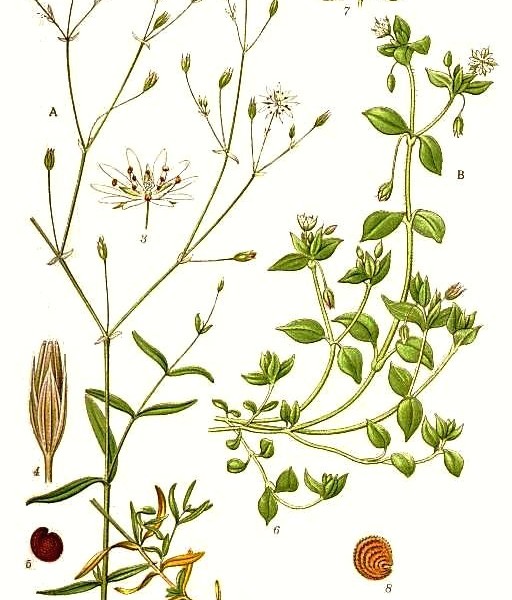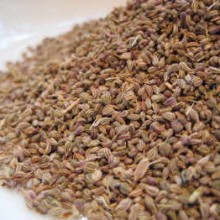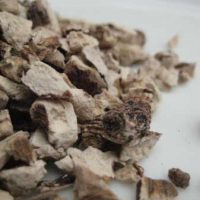Several plants have been named Chickweed, one of them, a plant belonging to the Purslane family and four species of Cerastium – the Mouse Ear Chickweed is this dried herb.
Uses for Chickweed:-
It is a demulcent and refrigerant and is held in high repute amongst traditional herbalists. It is used mostly in the form of an ointment.
The fresh and dried leaves have been employed as a poultice for inflammation and indolent ulcers A poultice of the plant material enclosed in muslin is a sure remedy for a carbuncle or an external abscess. The water in which the Chickweed is boiled should also be used to bathe the affected part.
Combined with Elecampane (Inula helenium), It has also been recommended as a specific for hydrophobia, and the juice, taken internally, for scurvy.
The plant chopped and boiled in lard makes a fine green cooling ointment, good for piles and sores, and cutaneous (skin) ailments and minor diseases. It soothes and relieves eczema and psoriasis itch quite well. It has also been employed as an application for ophthalmia.
A decoction made with the fresh or dried plant is good but gentle for constipation, and an infusion of the dried herb is a gentle remedy for mild but persistant coughs and hoarseness.
Chickweed Folklore:-
Gerard tells us that:
“the leaves of Chickweed boyled in water very soft, adding thereto some hog’s grease, the powder of Fenugreeke and Linseed, and a few roots of Marsh Mallows, and stamped to the forme of Cataplasme or pultesse, taketh away the swelling of the legs or any other part . . . in a word it comforteth, digesteth, defendeth and suppurateth very notably.” He goes on to say that “The leaves boyled in vinegar and salt are good against mangines of the hands and legs, if they be bathed therewith.”
Chickweed water is an old wives’ remedy for obesity.





